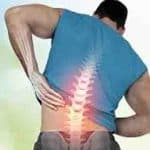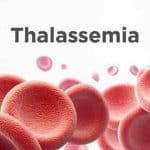ISLAMABAD, FEB 24 (ONLINE): Experts say regular sessions of yoga can help ease lower back pain. Pyrosky/Getty Images
Researchers report that weekly yoga practice improved back pain in a small group of study participants.
Muscular electrical activity in the lower back, which is associated with back pain, also improved.
The findings indicate that yoga could be an effective therapy for chronic low back pain, but more research is needed.
Yoga could be an effective treatment for chronic lower back pain, according to new research.
A studyTrusted Source published in the Journal of Orthopaedic Research reports that individuals with low back pain saw improvements in pain levels after taking part in weekly yoga practice.
Each week participants completed a series of yoga “asanas” — poses designed to move and stretch the body. Researchers also utilized electromyography, which measures electrical activity in muscles, to provide further evidence for their findings.
“The main takeaway from this research is that there is a statistically significant difference in the improvement in pain for the females in the study with non-specific low back pain,” Dr. Hanan Saleh, a spine medicine specialist with the Cleveland Clinic who wasn’t affiliated with the study, told Medical News Today.
Experts say the research lends further evidence to the effectiveness of yoga as a treatment for low back pain.
“Relieving back pain still remains a challenge. Asanas can become an addition to the range of possibilities in managing this disorder,” Dr. Alessandro de Sire, an author of the study and a professor of physical medicine and rehabilitation at Università degli Studi “Magna Graecia” di Catanzaro in Italy, told Medical News Today.Yoga poses to relieve lower back pain
De Sire and his team recruited 21 women, all of them between the ages of 18 and 40, to take part in the research.
Eleven of the women were “healthy” individuals while the other 10 reported having a condition known as nonspecific low back painTrusted Source (NSLBP), which is low back pain without an identifiable cause.
All participants took part in a four-week yoga program consisting of two sessions per week.
During the first week, the sessions were conducted in person while the remainder were conducted remotely using a “tele-yoga” approach.
Each session included 30 asanas in standing, seated, and supine positions. Researchers continued to follow up with participants for four additional weeks after the therapy.
The primary goal of the study was to see how the yoga practice affected pain levels. In order to track this, both groups did a pain assessment at baseline using the 10-point visual analogue scale (VAS) for pain.
If you’ve ever been to the doctor’s office and they’ve asked you to point at a series of faces from smiling to crying to show how you feel, then you’re familiar with the VAS system. It’s a simple way for anyone to indicate their general pain level.
Women with NSLBP had an average pain level of 6.8 at baseline, indicating moderate to severe pain, but after the weekly yoga intervention that score decreased by more than half to 3.3, indicating low to moderate pain.
Measuring electrical signals and back pain
Researchers also used electromyography to verify their findings about pain.
By attaching electrodes to the lower back region of participants, they were able to measure electrical activity within the muscles of the lower back. Certain patterns of electrical activity in the region are known to be associated with low back pain.
Specifically, scientists looked at the flexion-relaxation phenomenonTrusted Source, which is a clinical tool to assess back pain. When someone bends forward, as if to touch their toes, this movement is known as trunk flexion.
During flexion, the muscles of the lower back are engaged. However, at a certain point in the flexion, the muscles actually begin to relax again.
How much the muscles are engaged or relaxed during this process can be measured through electromyography and given a numerical value. A higher score indicates better muscle relaxation while a lower one indicates more muscle tension. So, lower scores tend to be associated with the risk of low back pain.
In this study, women with back pain had a baseline flexion-relaxation score of 5.12. After the yoga sessions this number increased to 9.49, indicating improvements to muscle relaxation and electrical activity during flexion.
Health benefits of yoga
Although the study was small and relatively short, the authors say they are optimistic about their findings.
Using data forecasting technique known as prophet modeling, the team found that the yoga program would continue to provide benefit over a longer period of time, based on their four-week trial results.
“Clearly, further studies are needed to delve into the long-term results of this asanas approach. However, the prophet model suggests that the results can be maintained, through a relatively simple, openly safe intervention,” said de Sire.
Additionally, the research also raises the profile of so-called “tele-yoga.” Like other forms of telehealth that have become more prominent since the COVID-19 pandemicTrusted Source, tele-yoga also appears to provide benefits for people with NSLBP.
Yoga is an ancient practice that combines breathing, meditation, and physical poses known as asanas. Researchers have increasingly taken an interest in the practice to see how it affects the body and mind in a way that can be proven scientifically.
“Generally speaking, some exercises that may be helpful can include the knee-to-chest exercise, piriformis and hamstring stretches, and my favorite ? core strengthening. The stronger our core, the more supported our spine is. Of course, not everyone should get the same set of exercises, which is why we focus heavily on physical therapy and personalize exercises based on the diagnosis,” he said.
How yoga may help reduce epilepsy seizures, anxiety
Experts say yoga has many physical and mental health benefits. Maskot/Getty Images
Researchers say yoga may help people with epilepsy reduce the frequency of seizures.
They add that yoga may also help people deal with the stigma sometimes associated with epilepsy.
Experts say the study adds to wealth of evidence that mind-body work has physical benefits as well as stress relief.
Some “downward dog” could be man’s (and woman’s) best friend when it comes to managing epilepsy.
A new study reports that doing yoga may help reduce seizure frequency, anxiety, and feelings of stigma that frequently comes with having epilepsy.
The research was published today in Neurology, the medical journal of the American Academy of Neurology.
“People with epilepsy often face stigma that can cause them to feel different than others due to their own health condition and that can have a significant impact on their quality of life,” said Dr. Manjari Tripathi, a study author and neurologist with the All India Institute of Medical Sciences in New Delhi, in a statement. “This stigma can affect a person’s life in many ways including treatment, emergency department visits, and poor mental health. Our study showed that doing yoga can alleviate the burden of epilepsy and improve the overall quality of life by reducing this perceived stigma.”
How the yoga and epilepsy study was conducted
Researchers looked at people with epilepsy with an average age of 30 in India.
They measured stigma based on participants’ answers to questions about being discriminated against, feeling different from other people, and whether they feel they contribute to society.
The scientists then identified 160 people meeting the criteria for experiencing stigma. Participants averaged one seizure per week and, on average, took at least two anti-seizure medications.
The team then randomly selected subjects to receive yoga therapy or sham yoga therapy.
Yoga therapy included exercises in loosening muscles, breathing, meditation and positive affirmations.
Sham yogaTrusted Source consisted of exercises mimicking the same yoga exercises, but participants were not given instructions on two key components of yoga believed to induce a relaxation response: slow and synchronized breathing, and attention to body movements and sensations during practice.
Each group participated in seven supervised group sessions of 45 to 60 minutes over three months. They were also asked to do yoga at home at least five times a week for 30 minutes, while tracking seizures and yoga sessions in a journal.
After three months of yoga therapy, researchers followed participants for another three months.
What researchers discovered about epilepsy and yoga
Researchers reported that people doing yoga were more likely to have reduced perception of stigma.
The team also discovered people who did yoga were more than four times as likely to have more than a 50% reduction in their seizure frequency after six months than the people who did sham yoga.
There was also a significant decrease in anxiety symptoms for those who did yoga compared to people who did not. Researchers said they saw improvements in quality of life measures and mindfulness.
“These study findings elevate the need to consider alternative therapies and activities for people with epilepsy facing stigma,” Tripathi said in a statement. “Yoga may not only help reduce stigma but also improve quality of life and mindfulness. Plus, yoga can be easily prerecorded and shared with patients online using minimal resources and costs.”
The authors acknowledged that a limitation of the study was that participants self-reported their seizure frequency and they may not have remembered all the information accurately.
The benefits of yoga
Dr. Sandipan Pati, an associate professor of neurology with McGovern Medical School at UTHealth Houston who was not involved in the study, told Medical News Today that stress is an important role in whether someone’s epilepsy worsens.
“If stress is managed well, then the outcome of disease can be better including quality of life,” Pati said. “In epilepsy, stress plays a very important role by precipitating seizures and worsening sleep.”
Ryan Glatt, a senior brain health coach and director of the FitBrain Program at Pacific Neuroscience Institute in California who was not involved in the study, told Medical News Today the study adds to the existing body of evidence that mind-body exercise practices, such as yoga, can have mental health benefits.
“Future studies may incorporate different groups comparing yoga to meditation and standard-of-care treatment to better understand the specific benefits of yoga and other stress-reducing interventions,” Glatt said. “More research is needed to better understand how yoga might benefit those with epilepsy, but there may be effects on stress, brain activity, and neurotransmitter function according to this 2012 study.”
How yoga can help mental health
Dr. Juliann Paolicchi, the director of Pediatric Epilepsy of Neurology at Staten Island University Hospital in New York, is a yoga practitioner who was not involved in the study.
She said that while the effects of yoga have been studied extensively, this study is novel in that it focuses on the stigma of the condition. But there are still questions to be answered, she said.
“The ‘why’ is an even more important aspect? Because they felt better as a whole about themselves? Because they felt less stress, anxiety, and tension overall? Because they felt more control over their epilepsy? These issues lead to even more interesting exploration from this study,” Paolicchi said.
Paolicchi added that yoga doesn’t just affect the mental state of someone with epilepsy.
“Regulated breathing and guided meditation have been shown to stimulate the parasympathetic nervous system through the vagus nerve,” Paolicchi said. “Interestingly, vagus nerve activation through directed neuromodulation pacemakers have also been shown to reduce seizures over time and lessen the impact of seizures.”
“Vagus nerve stimulation also decreases the length, severity of seizures and the post-ictal recovery phase. It is just speculation, but the connection between these modalities is intriguing,” she added.
Paolicchi said she can attest to the calming, grounding power of yoga.
“Regular utilization of breathing techniques can also provide a decrease in anxiety and stress,” she said. “I regularly practice brief sessions of focused breathing in my clinics of epilepsy, anxiety, and migraine patients to demonstrate the ease and accessibility of these techniques. And everyone prefers non-pharmacologic therapies to their conditions.”
Follow the PNI Facebook page for the latest news and updates.








